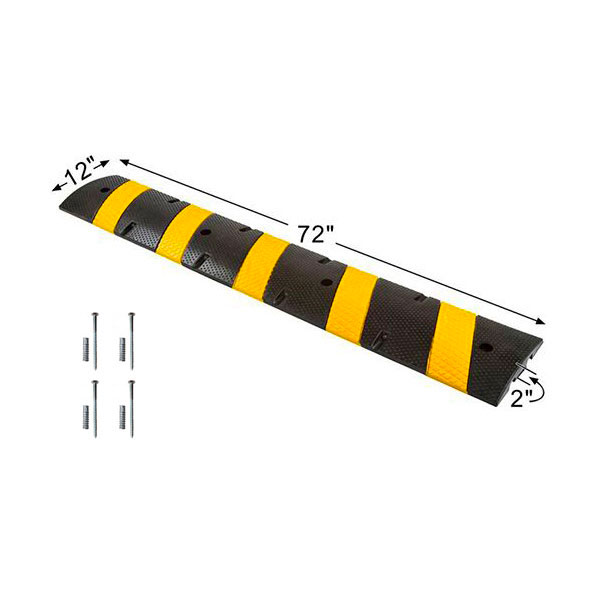Speed bumps are intended to protect other road users by forcing motorists to drive more slowly.
Most models are presented as an elevation of the road reminiscent of a speed bump . In the past, speed bumps were faults in the flatness of the roadway.
It goes without saying that we know perfectly how to avoid them today when building a road. Their installation therefore has other objectives, and in particular that of presenting an obstacle to the circulation of cars, so that drivers are obliged to slow down.
The elevation is usually 10 centimeters. The retarder can occupy part or even the entire width of the road. Some devices are coupled with a pedestrian crossing, with markings on the ground.
The classic speed bump is a currant or, more colloquially, a speed bump. We still sometimes speak of a “lying policeman”. This is the most common model, as well as the first to be used. It is inspired, as we have seen, by a fault in the roadway, which it reproduces.
The cassis is about 10 centimeters high and crosses the roadway for 4 meters. This is the typical speed bump for 30 km/h zones. It is found near schools, but also sometimes on forest roads or rest areas. A variant of black currant takes the form of a trapezium and is used to arrange a pedestrian crossing.
The speed bump is announced at 150 meters, or 250 meters outside built-up areas. In town, the signs are closer. There is also a marking on the ground comprising three white triangles on each of the traffic lanes, with the points in the direction in which the vehicles are traveling.
Other embossed speed bumps
Other types of speed bumps exist. We thus find soundtracks, which resemble a speed bump on the road, but thinner and less high. Thus, soundtracks rarely exceed 1 centimeter in height and 50 centimeters in width.
The particularity of this device is that you hear a noise when you pass over it with the wheels of the car. They are sometimes grouped together in groups of five or six, so that they are clearly perceived by drivers and have an effect on speed modulation.
The soundtracks are not announced by special signage. They are typically installed on highways, private roads and around hospitals and car parks.
Another type of speed bump comes in the form of a cushion. In practice, it is a raised tray (6 or 7 centimeters high) with sloping edges. It is an easy shape to spot. Added to this is a distinct color, often red or ochre.
These speed bumps are placed in built-up areas, to equip streets limited to 30 km/h. They are also found in motorway service areas or in parking areas. As with the blackcurrant, the highway code provides for ground markings with three triangles, the tip of which is oriented in the direction of traffic.
These various obstacles are difficult to cross at more than 30 km/h for a car. Wide vehicles, such as buses, avoid them easily, because the wheels pass to the right and left of the obstacle.
